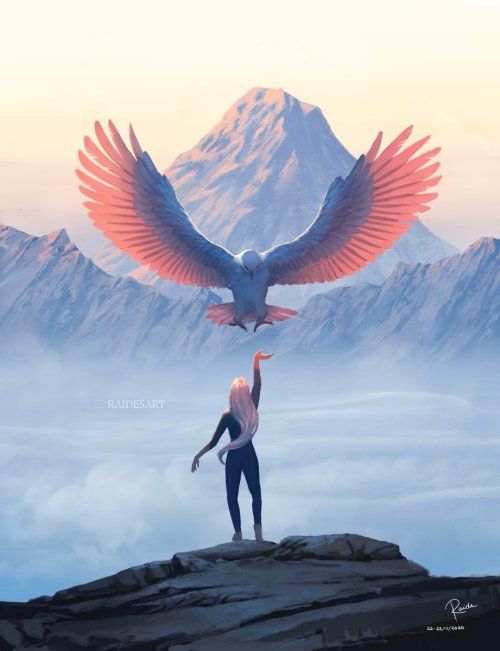Experimented With Cool And Warm Colours :) 💙

Experimented with cool and warm colours :) 💙
More Posts from Mystarypi and Others
Hello everyone!
Thank you so much for all the support for my astrophotography blog! I just wanted to let you guys know that I have started a project and a blog about light pollution.
As an avid astrophotographer, light pollution has affected me in a variety of ways - most notably by messing up my pictures 😂
I attached the Project DeLight link to this post. I’m also gathering data about outdoor light features across the world: https://forms.gle/UER8BtStqWktf2kn6 - the form will only take about 1-2 minutes and I’ve already posted about the first batch of data in the DeLight blog.
Thank you everyone!
Michelle Park

One of the most difficult collections ever: the Caldwell object collection! ♥♥♥
Taking around 6 months to complete, this was one of the longest collections ever! Many of these objects could be photographed during specific times of the year so I often had to wait months before I could take a picture. 🎇🎆🌌✨💫
Taken by me (Michelle Park) using the Slooh telescopes!
One of my favorite nebulae ♥♥♥ It looks so beautiful 🥰🥰🥰

NGC 6357: Cathedral to Massive Stars via NASA https://ift.tt/31D4Lqn
How massive can a normal star be? Estimates made from distance, brightness and standard solar models had given one star in the open cluster Pismis 24 over 200 times the mass of our Sun, making it one of the most massive stars known. This star is the brightest object located just above the gas front in the featured image. Close inspection of images taken with the Hubble Space Telescope, however, have shown that Pismis 24-1 derives its brilliant luminosity not from a single star but from three at least. Component stars would still remain near 100 solar masses, making them among the more massive stars currently on record. Toward the bottom of the image, stars are still forming in the associated emission nebula NGC 6357. Appearing perhaps like a Gothic cathedral, energetic stars near the center appear to be breaking out and illuminating a spectacular cocoon.
(Published August 30, 2020)





Puppy galore! 🐶🐾

sakura dog
watercolour

This is Comet Pan-STARRS! 🌠🌠🌠
This comet took millions of years to arrive from the Oort Cloud. Its unusual brightness, which allowed it to be visible even in 2013, and its hyperbolic orbit show that the comet could potentially have interstellar origins! 💫💫💫
Taken by me (Michelle Park) using the Slooh Canary Two telescope on July 21st, 2022.




This is the 2021 Pink Supermoon!🌜🌷🌸🌹🌺🌼💐💮
Although this moon is not pink, the name “Pink Moon” is named after the pink phlox flower that appears in the spring during the time of this event. This rare celestial event won’t happen again for another 8 years so be sure to check it out! ✨✨✨
Taken by me (Michelle Park) using the Slooh telescopes on April 26th, 2021.

IC 1396, Open Star Cluster

This is the Cat’s Paw Nebula! 🐾🐾🐾
This nebula is glowing due to the interactions between its hot stars and large molecules known as polycyclic aromatic hydrocarbons. This makes it particularly bright in the infrared and a common target for astrophotography in the Milky Way galaxy! 🔭🔭🔭
Taken by me (Michelle Park) using the Slooh Chile Two telescope on March 7th, 2021 at 6:38 UTC.
-
 headlesssamurai liked this · 1 year ago
headlesssamurai liked this · 1 year ago -
 starsinthekettle reblogged this · 1 year ago
starsinthekettle reblogged this · 1 year ago -
 the-chaos-creator liked this · 1 year ago
the-chaos-creator liked this · 1 year ago -
 vintagedaisywitch liked this · 1 year ago
vintagedaisywitch liked this · 1 year ago -
 belosers reblogged this · 1 year ago
belosers reblogged this · 1 year ago -
 photos2day liked this · 1 year ago
photos2day liked this · 1 year ago -
 rae30 liked this · 1 year ago
rae30 liked this · 1 year ago -
 music-is-endless liked this · 2 years ago
music-is-endless liked this · 2 years ago -
 pingo1387 reblogged this · 2 years ago
pingo1387 reblogged this · 2 years ago -
 waywardscone liked this · 2 years ago
waywardscone liked this · 2 years ago -
 sanktalucrezias liked this · 2 years ago
sanktalucrezias liked this · 2 years ago -
 pingo1387 liked this · 2 years ago
pingo1387 liked this · 2 years ago -
 awsome-space-dragon reblogged this · 2 years ago
awsome-space-dragon reblogged this · 2 years ago -
 awsome-space-dragon liked this · 2 years ago
awsome-space-dragon liked this · 2 years ago -
 sopjies liked this · 2 years ago
sopjies liked this · 2 years ago -
 insanity6666 reblogged this · 2 years ago
insanity6666 reblogged this · 2 years ago -
 insanity6666 liked this · 2 years ago
insanity6666 liked this · 2 years ago -
 stormears reblogged this · 2 years ago
stormears reblogged this · 2 years ago -
 catyuy reblogged this · 2 years ago
catyuy reblogged this · 2 years ago -
 zongzh liked this · 2 years ago
zongzh liked this · 2 years ago -
 digidemii reblogged this · 2 years ago
digidemii reblogged this · 2 years ago -
 peachloveade reblogged this · 2 years ago
peachloveade reblogged this · 2 years ago -
 metalzoic liked this · 2 years ago
metalzoic liked this · 2 years ago -
 jibb-ly liked this · 2 years ago
jibb-ly liked this · 2 years ago -
 restingtuna9ight liked this · 2 years ago
restingtuna9ight liked this · 2 years ago -
 ssssspecimens reblogged this · 2 years ago
ssssspecimens reblogged this · 2 years ago -
 universallymakertragedy liked this · 2 years ago
universallymakertragedy liked this · 2 years ago -
 imreallyhereforplance liked this · 2 years ago
imreallyhereforplance liked this · 2 years ago -
 tasteofgreen reblogged this · 2 years ago
tasteofgreen reblogged this · 2 years ago -
 coff-ee-kiddo liked this · 3 years ago
coff-ee-kiddo liked this · 3 years ago -
 comicrockabillywolf reblogged this · 3 years ago
comicrockabillywolf reblogged this · 3 years ago -
 coolchippers reblogged this · 3 years ago
coolchippers reblogged this · 3 years ago -
 coolchippers liked this · 3 years ago
coolchippers liked this · 3 years ago -
 peard reblogged this · 3 years ago
peard reblogged this · 3 years ago -
 trouble-warning liked this · 3 years ago
trouble-warning liked this · 3 years ago -
 a-sa reblogged this · 3 years ago
a-sa reblogged this · 3 years ago -
 a-sa liked this · 3 years ago
a-sa liked this · 3 years ago -
 the-dreaming-me liked this · 3 years ago
the-dreaming-me liked this · 3 years ago -
 idol-kindergarden reblogged this · 3 years ago
idol-kindergarden reblogged this · 3 years ago -
 annoyinglyeclecticruins reblogged this · 3 years ago
annoyinglyeclecticruins reblogged this · 3 years ago

